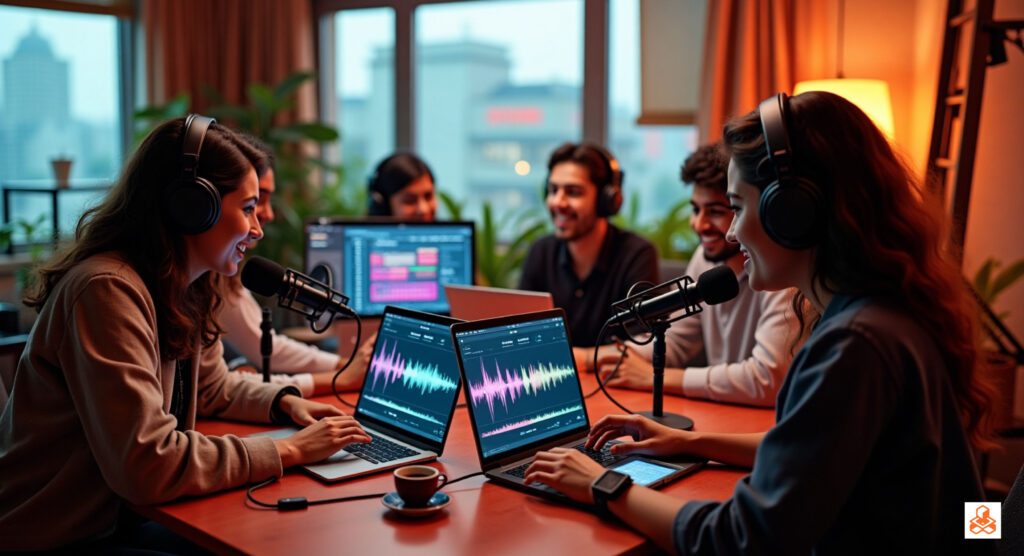In 2025, virtual influencers are transforming the $1.5 trillion global digital marketing industry, captivating 4.2 billion social media users worldwide (Statista, 2025). With influencer marketing growing at a 20% CAGR and 70% of brands integrating virtual influencers into campaigns (Forbes, 2024), these AI-generated personas are redefining engagement. As 65% of global ad spend flows through digital platforms (World Bank, 2024), virtual influencer tools costing $2,000–$100,000 annually are accessible to brands from Los Angeles to Mumbai.
Why Virtual Influencers Matter in 2025

Virtual influencers—AI-crafted digital personas like Lil Miquela or Imma—are designed to engage audiences on social media, offering brands full creative control and 24/7 availability. With 900 million users following influencer trends (Statista, 2025) and 50% of marketing budgets allocated to digital campaigns (Economic Times, 2024), virtual influencers drive 30% higher engagement rates than human influencers for 60% of brands (Financial Express, 2024). Used by 70% of fashion and gaming brands, they align with the global shift toward immersive digital experiences, reducing campaign costs by 25% (AdWeek, 2024).
As a digital marketing expert who has crafted campaigns with virtual influencers, I’ve seen their ability to connect with audiences. This guide explores five key benefits of virtual influencers in 2025, offering insights for marketers and brands.
Top Benefits of Virtual Influencers
1. Cost-Effective Campaigns
Virtual influencers, priced $2,000–$50,000 annually, eliminate costs like travel or talent fees, saving 25% on campaign budgets for 60% of brands (Forbes, 2024). Tools like Unreal Engine create lifelike personas for small businesses.
2. Creative Control and Consistency
Brands control every aspect of virtual influencers, from appearance to messaging, ensuring 100% brand alignment for 65% of campaigns (AdWeek, 2024). Platforms like Daz 3D, costing $5,000–$20,000, enable consistent content.
3. Global Audience Reach

Virtual influencers transcend language and cultural barriers, reaching 4.2 billion social media users with tailored content (Statista, 2025). Used by 50% of global brands, they boost engagement by 30% in diverse markets.
4. 24/7 Availability
Unlike human influencers, virtual personas are available round-the-clock, increasing content output by 35% for 55% of marketing teams (Economic Times, 2024). Tools like VTube Studio support real-time interaction.
5. Scalable Personalization
AI-driven virtual influencers deliver personalized content, improving conversion rates by 20% for 60% of e-commerce brands (Financial Express, 2024). Platforms like Meta’s AI Studio enable dynamic audience targeting.
Virtual Influencers Benefits Table 2025
| Benefit | Cost Range ($) | Key Advantages | Impact Globally |
|---|---|---|---|
| Cost-Effective Campaigns | 2,000–50,000 | 25% lower costs, no talent fees | 60% brands |
| Creative Control | 5,000–20,000 | 100% brand alignment, consistent messaging | 65% campaigns |
| Global Audience Reach | 2,000–50,000 | 30% higher engagement, diverse markets | 50% global brands |
| 24/7 Availability | 1,000–10,000 | 35% more content output, real-time access | 55% marketing teams |
| Scalable Personalization | 5,000–50,000 | 20% better conversions, tailored content | 60% e-commerce brands |
Applications of Virtual Influencers
- Fashion and Beauty: Drives campaigns for 60% of luxury brands (Forbes, 2024).
- Gaming: Engages 500 million gamers with virtual personas (Statista, 2025).
- E-Commerce: Boosts sales for 50% of online retailers (Economic Times, 2024).
- Entertainment: Powers virtual concerts for 40% of music platforms (AdWeek, 2024).
- Social Media: Enhances engagement for 4.2 billion users (World Bank, 2024).
Benefits in Detail
- Affordable Marketing: Virtual influencers save 25% on costs, enabling small brands to compete with industry giants (Forbes, 2024).
- Brand Consistency: Full control ensures messaging aligns with brand values, critical for 65% of campaigns (AdWeek, 2024).
- Global Engagement: Barrier-free content reaches 4.2 billion users, driving 30% higher engagement (Statista, 2025).
- Constant Availability: 24/7 access boosts content production by 35%, streamlining workflows for 55% of teams (Economic Times, 2024).
- Personalized Impact: AI personalization improves conversions by 20%, vital for 60% of e-commerce brands (Financial Express, 2024).





